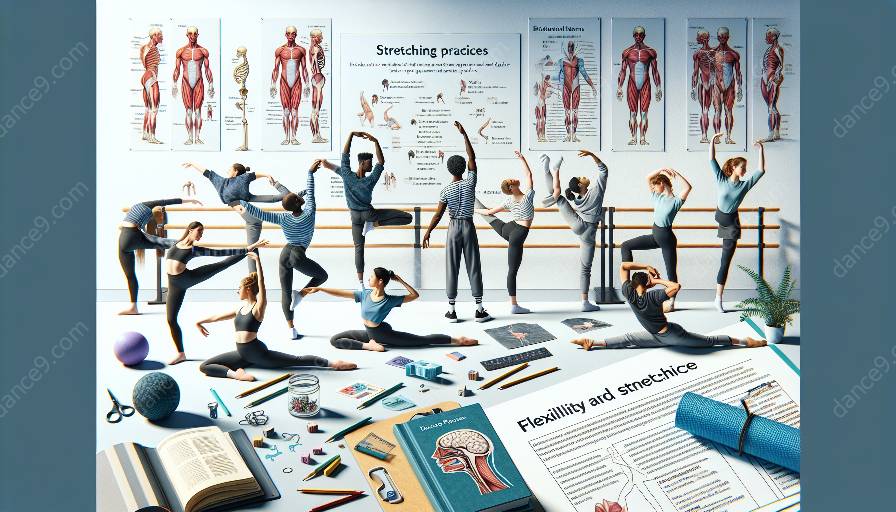Dance is an art form that demands a high level of physical and mental dexterity. For dancers, flexibility is not just a desirable trait; it is an essential component of their performance and overall well-being. Inadequate flexibility can have significant effects on a dancer's ability to execute movements, prevent injuries, and maintain optimal physical and mental health.
Impact on Performance
Flexibility plays a critical role in a dancer's ability to execute various dance movements with precision, fluidity, and grace. Insufficient flexibility can hinder a dancer's performance by limiting their range of motion and impeding their ability to achieve the desired aesthetics of dance. For example, dancers with tight hamstrings may struggle to achieve high leg extensions or grand battements, impacting the overall quality of their performance. Inadequate flexibility can also affect a dancer's ability to engage in challenging techniques such as splits, leaps, and backbends, limiting their repertoire and artistic expression.
Risk of Injuries
One of the most pressing concerns associated with inadequate flexibility in dancers is the increased risk of injuries. Limited flexibility can lead to muscle imbalances, joint strain, and overuse injuries. For instance, dancers with poor hip and spine flexibility are more susceptible to lower back pain and spinal misalignments, which can hinder their ability to execute movements and lead to chronic discomfort. Furthermore, inadequate flexibility may prevent dancers from properly absorbing the impact of jumps and landings, putting them at greater risk of lower extremity injuries such as sprains, strains, and fractures.
Psychological Effects
Aside from the physical implications, inadequate flexibility can also impact a dancer's mental well-being. Frustration, self-doubt, and anxiety can arise when a dancer feels restricted by their lack of flexibility, leading to decreased confidence and enthusiasm for dance. The inability to achieve certain movements or positions due to insufficient flexibility can diminish a dancer's sense of accomplishment and satisfaction, potentially affecting their overall emotional health and motivation to continue dancing.
Importance of Flexibility and Stretching
To mitigate the effects of inadequate flexibility, dancers must prioritize flexibility training and stretching routines as integral components of their dance practice. Regular stretching exercises aimed at improving flexibility can enhance a dancer's performance by expanding their range of motion, promoting better posture, and reducing the likelihood of muscular imbalances. Additionally, improved flexibility contributes to better body awareness and alignment, allowing dancers to move more efficiently and with reduced strain on their muscles and joints.
Enhancing Physical and Mental Well-being
By incorporating flexibility and stretching into their routine, dancers can experience numerous benefits for their physical and mental well-being. Enhanced flexibility improves overall mobility, agility, and coordination, enabling dancers to execute movements with greater ease and fluidity. This, in turn, can boost their confidence and artistic expression, fostering a positive mindset and emotional resilience. Additionally, the act of stretching and focusing on breath during flexibility exercises can promote relaxation, reduce stress, and contribute to a sense of mindfulness and mental clarity, all of which are vital for maintaining holistic well-being in dance.
Conclusion
In conclusion, inadequate flexibility can significantly impact a dancer's performance and well-being, posing challenges to their artistic expression, physical health, and emotional resilience. However, through dedicated flexibility training and stretching practices, dancers can mitigate these effects and cultivate a more robust foundation for their dance journey. By recognizing the importance of flexibility and its profound influence on physical and mental health in dance, dancers can strive to achieve greater flexibility, resilience, and fulfillment in their artistic pursuits.


































